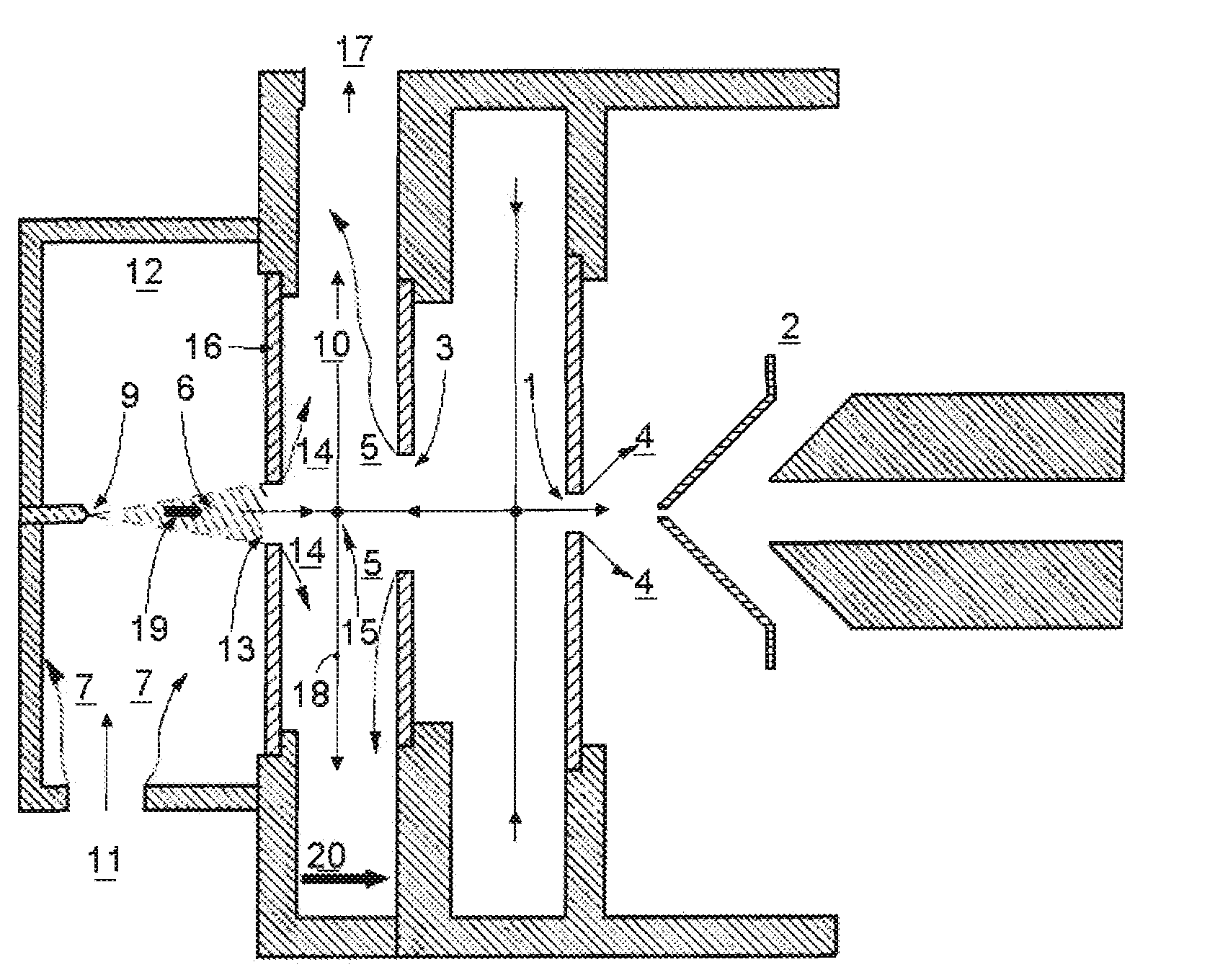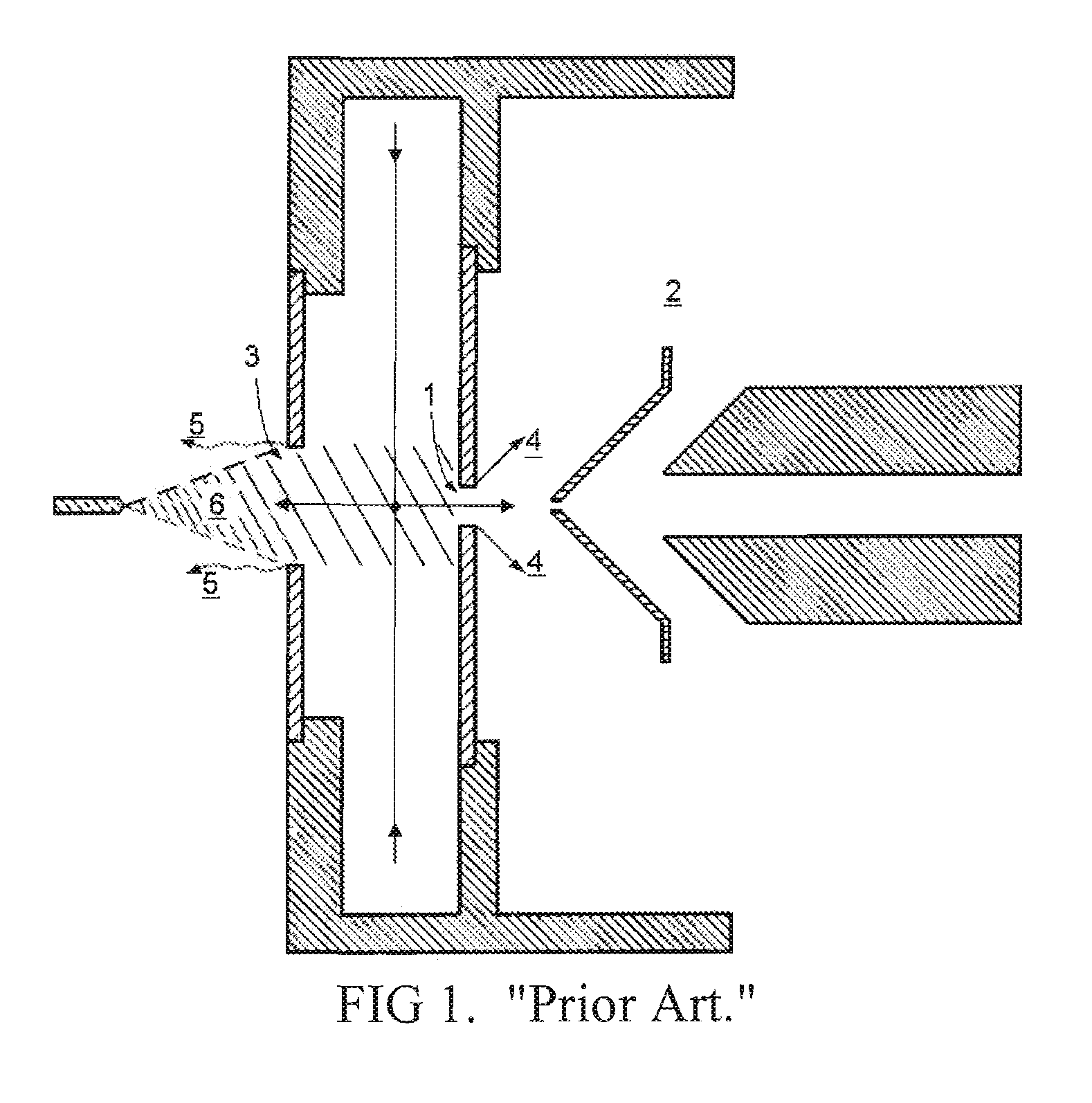Ionizer for vapor analysis decoupling the ionization region from the analyzer
- Summary
- Abstract
- Description
- Claims
- Application Information
AI Technical Summary
Benefits of technology
Problems solved by technology
Method used
Image
Examples
Embodiment Construction
[0056]The new ionizer isolates the effective ionization volume from the counterflow region by placing them in separate chambers: an ionization chamber and an impaction chamber. Both chambers are communicated through an orifice, to be referred to as the impaction orifice. The impaction orifice is formed in the plate separating both chambers (the impaction plate), and is approximately aligned with the axis of the inlet orifice (1) to the analytical instrument (2), as shown in FIG. 3. The analytical instrument (2) may be, for instance, a mass spectrometer or a differential mobility analyzer. The counterflow jet (5) emerges from the curtain plate orifice (3) and enters the counterflow impaction chamber (10). The sample flow (7) enters first through the sample inlet (11) in the ionization chamber (12), where it gets in contact with the electrospray cloud (6). In the impaction orifice (13), the sample flow is accelerated towards the counterflow impaction chamber (10). The jet formed by th...
PUM
 Login to View More
Login to View More Abstract
Description
Claims
Application Information
 Login to View More
Login to View More - R&D
- Intellectual Property
- Life Sciences
- Materials
- Tech Scout
- Unparalleled Data Quality
- Higher Quality Content
- 60% Fewer Hallucinations
Browse by: Latest US Patents, China's latest patents, Technical Efficacy Thesaurus, Application Domain, Technology Topic, Popular Technical Reports.
© 2025 PatSnap. All rights reserved.Legal|Privacy policy|Modern Slavery Act Transparency Statement|Sitemap|About US| Contact US: help@patsnap.com



